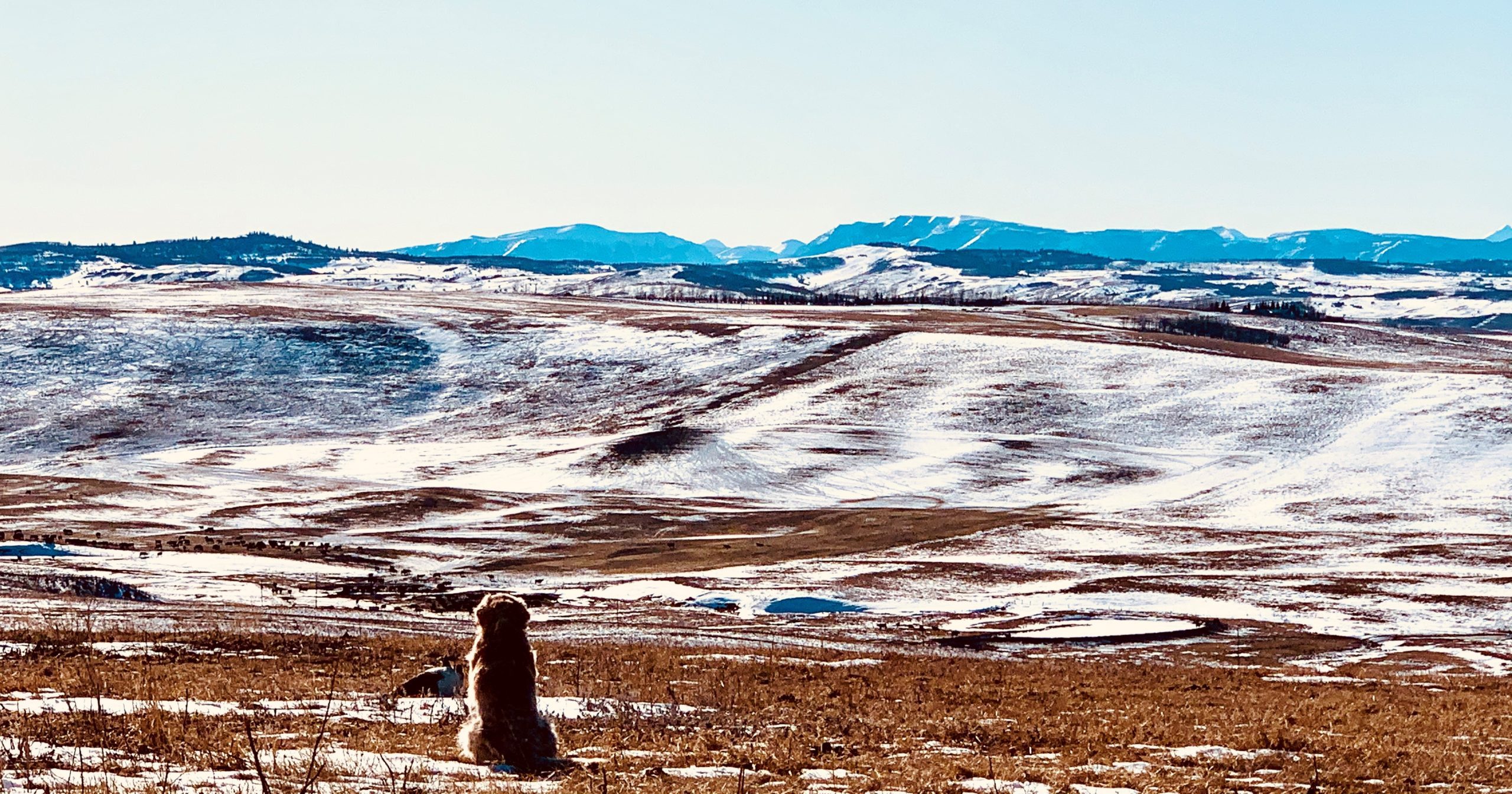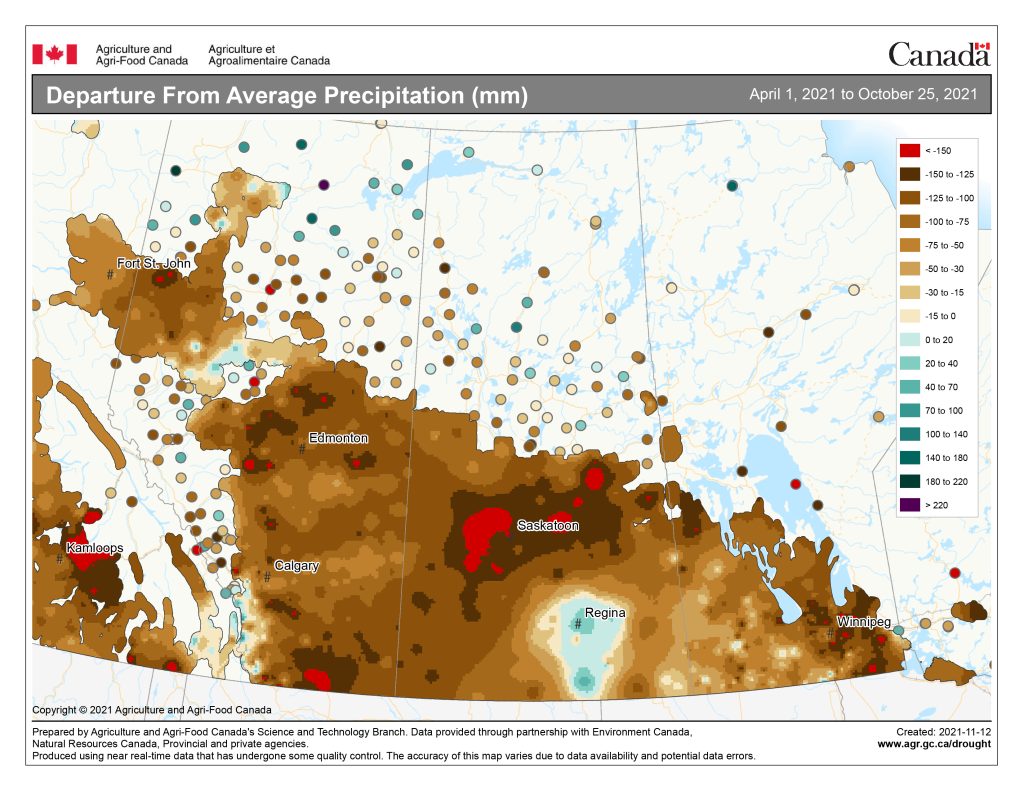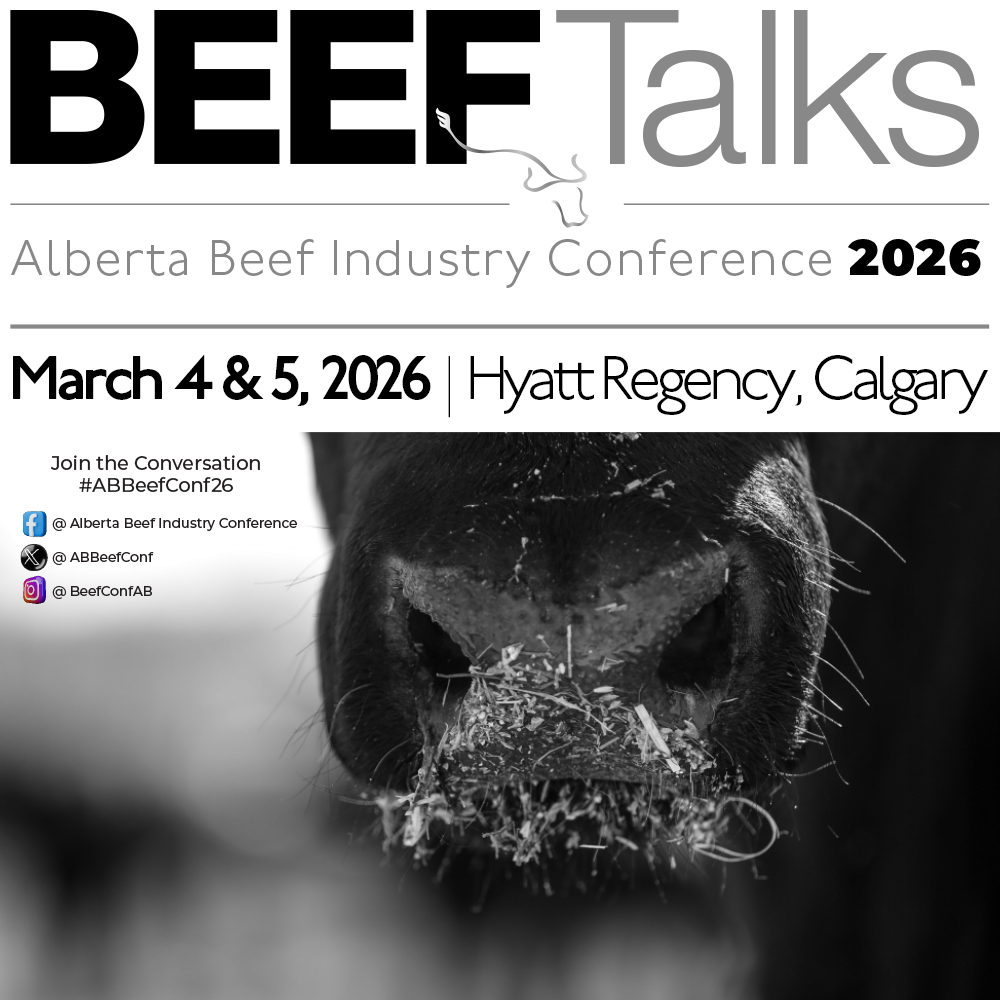AB Direct - Steers
Rail: 492.00-493.50 FOB feedlot (last week)
AB Direct - Heifers
Rail: 492.00-493.50 FOB feedlot (last week)
US Trade- Steers
Rail: 355.00-363.00 (IA, NE) last week
US Trade - Heifers
Rail: 355.00-363.00 (IA, NE) last week
Canadian Dollar
0.19

Growing forward into the 2022 grazing season
It might be difficult to keep top of mind while pastures and native grassland are frozen this winter but, under the snow, the land that suffered through extreme heat and drought in 2021 is in distress. As we look ahead to the 2022 grazing season, it will be important to engage in pasture rejuvenation strategies to support recovery.
In my role at Agriculture and Agri-Food Canada (AAFC), I focus on weather and climate impacts. What we experienced in 2021 is unprecedented. It was an unusual climate occurrence in terms of lack of moisture and intense heat combined, and what is of greater concern is how widespread it was. Drought is typically caused by a moisture deficit, but this year it combined with heat stress, exacerbating the problem and making the impacts more severe.
Not only was a large portion of grazing land severely impacted by drought in 2021, but many areas had already faced a two to three year moisture deficit. Surface water supply maps show high levels of extreme and severe moisture deficits throughout southern Alberta, west to east, for the past three to four years.

The forages and perennial plants we use for forage and cover cropping typically thrive on soil moisture recharged in the fall, when the root systems build up or recover moisture reserves to get a head start going into winter. But this past fall, we did not receive sufficient moisture for recovery. In fact, groundwater continues to recede. As a result, pastures were forced into dormancy with no recovery. Based on these facts, we can predict that pasture regrowth and recovery in 2022 will be very slow.
Even if we receive the much-needed moisture through this winter and early spring, we can expect a slower start to the year, simply because the land didn’t have the moisture recovery period in the fall. Giving pastures the extra recovery time they need this spring will be difficult for producers stretched to source feed through the winter, and anxious to get cattle back on pasture. In terms of pasture production in 2022, being patient could mean the difference between having a pasture recovered enough to graze come summer, and not having a pasture at all.
This article was first published in Volume 2 Issue 1 of ABP Magazine (January 2022). Watch for more digital content from the magazine on ABP Daily.


